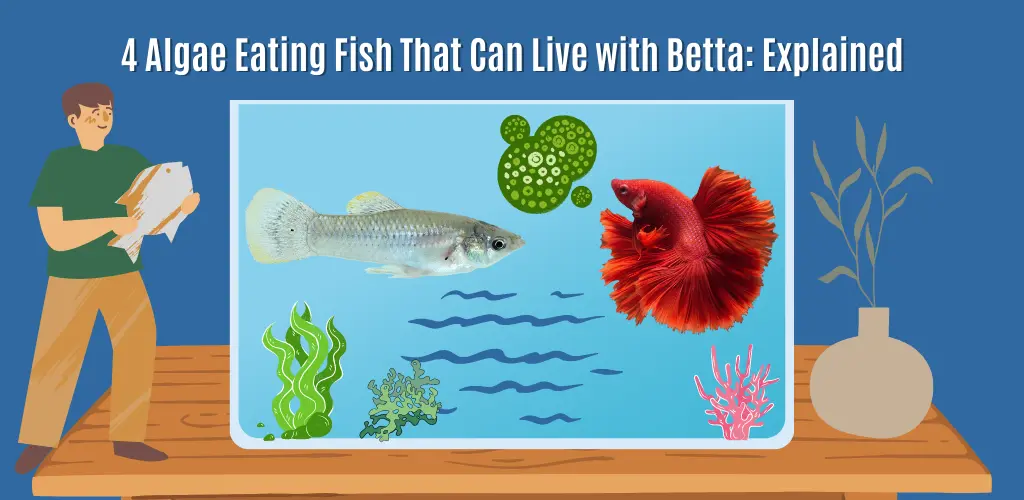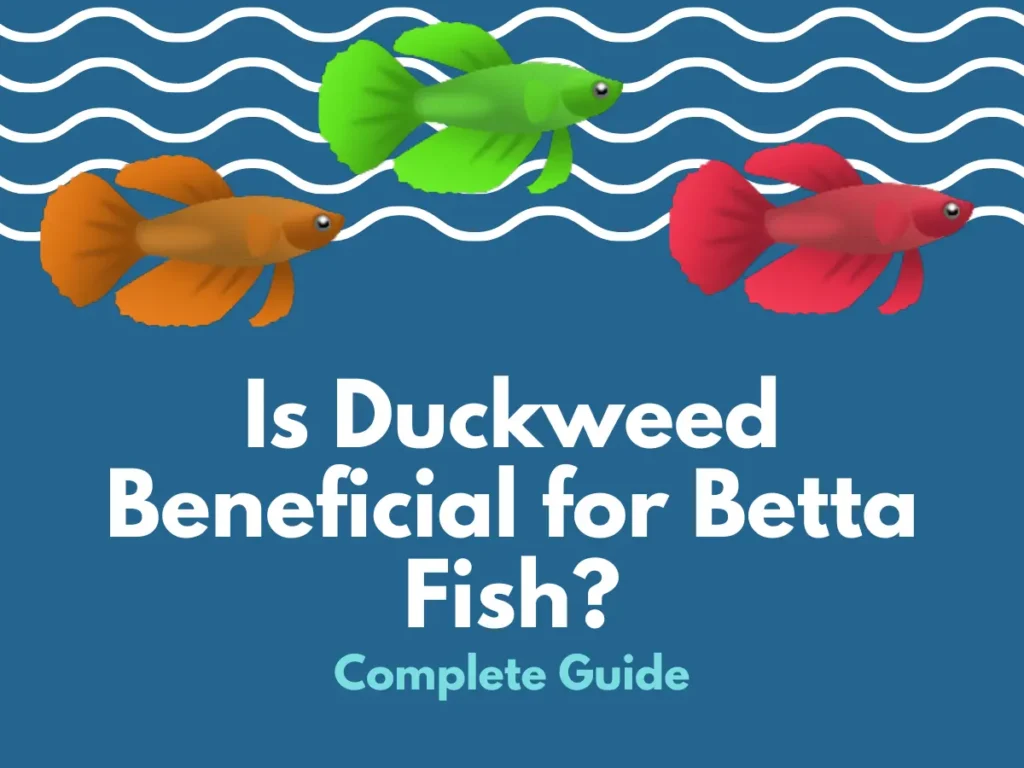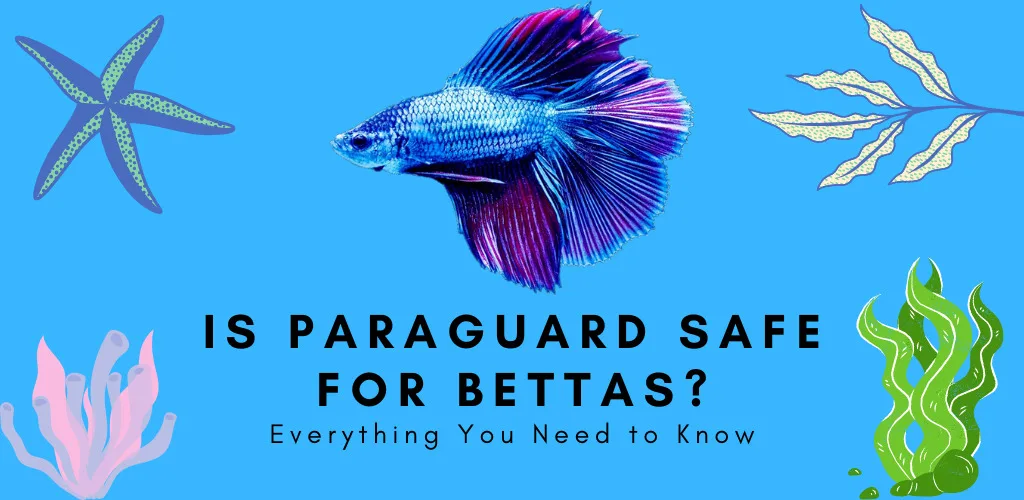If you own a Betta fish, you are probably familiar with the struggle of keeping the aquarium clean and healthy. One of the most common problems Betta owners face is excessive algae growth. While Betta fish are beautiful and captivating, they are not efficient algae eaters. Fortunately, several algae-eating fish can live peacefully with Betta fish. In this article, we will discuss Algae Eating Fish That Can Live with Betta, their characteristics, compatibility with Betta fish, and how to take care of them.
Why is Algae Eater with Betta Fish a Problem?
Algae are microscopic plants that thrive in aquatic environments. Although some algae benefit aquatic ecosystems, excessive growth can cause problems in Betta tanks. Algae growth can make the aquarium unattractive, reduce oxygen levels, and release toxins into the water. Moreover, excessive algae growth can block the light and hinder the growth of live plants in the tank. Introducing algae-eating fish that can live with Betta can help mitigate these issues.
Benefits of Having Algae Eating Fish with Betta
One of the best ways to control algae growth in Betta tanks is to introduce algae-eating fish. Algae-eating fish can help maintain a clean and healthy environment in the tank by consuming the excess algae. Moreover, these fish can also add diversity and color to the aquarium, creating a more natural and appealing environment for your Betta fish. The presence of 4 Algae Eating Fish That Can Live with Betta can significantly improve the tank’s condition.
Characteristics of Algae Eating Fish That Can Live with Betta
Types of Algae Eating Fish
There are several types of algae-eating fish that can live with Betta. Some of the most popular types are:
- Siamese Algae Eater: Siamese Algae Eaters (SAEs) are a popular choice for Betta tanks due to their effectiveness in controlling algae growth. These fish are known for their ability to consume different types of algae, including stubborn hair algae. SAEs are peaceful fish and can coexist with Betta fish if provided with enough space and hiding places.
- Otocinclus Catfish: Otocinclus catfish, also known as Dwarf Suckers, are small and peaceful fish that can consume different types of algae. These fish are social and prefer to live in groups of six or more. They are compatible with Betta fish but require a well-maintained tank with plenty of hiding places.
- Amano Shrimp: Amano Shrimp are not technically fish, but they are excellent algae eaters that can coexist with Betta fish. These shrimp can consume different types of algae, including green spot algae and hair algae. They are peaceful and can add diversity and color to the aquarium.
- Nerite Snails: Nerite Snails are small and colorful snails that can consume different types of algae. These snails are compatible with Betta fish and can help maintain a clean and healthy environment in the tank. However, they can lay eggs on tank surfaces, which can be difficult to remove.
Additional Algae-Eating Species
- Mystery Snails: Mystery Snails are another type of snail that can help control algae growth in Betta tanks. They are larger than Nerite Snails and come in a variety of colors. They are peaceful and can coexist with Betta fish, but like Nerite Snails, they can lay eggs on tank surfaces.
- Bristlenose Pleco: Bristlenose Plecos are small, hardy catfish that are excellent algae eaters. They have a unique appearance with bristles on their faces and can live peacefully with Betta fish if the tank is large enough. They require hiding places and a varied diet that includes algae wafers and vegetables.
Size and Appearance
Algae-eating fish can vary in size and appearance depending on the species. Siamese Algae Eaters can grow up to 6 inches, while Otocinclus catfish can reach up to 2 inches. Amano Shrimp are small and can grow up to 2 inches, while Nerite Snails and Mystery Snails can grow up to 1-3 inches.
Behavior and Temperament
Most algae-eating fish are peaceful and can coexist with Betta fish with enough space and hiding places. However, some species can be territorial or aggressive, especially if they feel threatened or if their space is invaded. Choosing the right algae-eating fish that can live peacefully with Betta fish and have similar behavior and temperament is important.
Water Requirements
Algae-eating fish have different water requirements depending on the species. Siamese Algae Eaters prefer a slightly acidic to neutral pH (6.5-7.5) and a temperature range of 75-79°F. Otocinclus catfish prefer a pH range of 6.8-7.5 and a temperature range of 72-78°F. Amano Shrimp prefer a pH range of 6.5-7.5 and a temperature range of 72-78°F. Nerite Snails and Mystery Snails prefer a pH range of 7.5-8.0 and a temperature range of 68-84°F.
Compatibility of Algae Eating Fish with Betta
Betta Fish and Siamese Algae Eaters
Betta fish and Siamese Algae Eaters can coexist peacefully with enough space and hiding places. However, it is important to note that SAEs can become aggressive if they feel threatened or don’t have enough space to swim around. Therefore, keeping at least a 20-gallon tank is recommended if you want to add SAEs to your Betta tank. Moreover, it is important to add SAEs to the tank before adding Betta fish, as they can become territorial if they feel like their space is being invaded.
Betta Fish and Otocinclus Catfish
Betta fish and Otocinclus catfish can coexist peacefully, but Otocinclus catfish prefer to live in groups of six or more and can become stressed if kept alone. Therefore, keeping at least six Otocinclus catfish in a 20-gallon tank with Betta fish is recommended. Moreover, Otocinclus catfish can be sensitive to water conditions, so it is important to maintain a well-filtered and well-maintained tank.
Betta Fish and Amano Shrimp
Betta fish and Amano Shrimp can coexist peacefully, but the huge problem is that Betta fish can sometimes see Amano Shrimp as food, especially if they are hungry or if the shrimp are small. Therefore, keeping larger Amano Shrimp in a 10-gallon tank with Betta fish is recommended. Moreover, Amano Shrimp can be sensitive to water conditions, so it is important to maintain a well-filtered and well-maintained tank.
Betta Fish and Nerite Snails
Betta fish and Nerite Snails can live together, but Nerite Snails can lay eggs on tank surfaces, which can be difficult to remove. Therefore, keeping only one or two Nerite Snails in a 10-gallon tank with Betta fish is recommended. Moreover, Nerite Snails can be sensitive to water conditions, so it is important to maintain a well-filtered and well-maintained tank.
Taking Care of Algae Eating Fish in a Betta Tank
Feeding
Algae-eating fish cannot survive on algae alone. They require a balanced diet that includes algae wafers, blanched vegetables like zucchini and cucumber, and protein-rich foods such as shrimp pellets. It’s important to provide a variety of foods to ensure they receive all necessary nutrients.
Tank Maintenance
Maintaining a clean and healthy tank is crucial for the well-being of both Betta fish and algae-eating fish. Regular water changes, cleaning the substrate, and removing excess food and waste are essential tasks. Monitoring water parameters, such as pH, ammonia, nitrite, and nitrate levels, helps ensure a stable environment.
Hiding Places
Providing plenty of hiding places in the tank is important for reducing stress and preventing aggression among the fish. Decorate the tank with plants, rocks, and caves to create hiding spots and territories for both Betta fish and algae-eating fish.
Monitoring Behavior
Regularly observe the behavior of all the fish in the tank. Look for signs of stress, aggression, or illness. If any fish show signs of distress or aggression, consider rearranging the tank layout or, in severe cases, separating the aggressive fish.
Conclusion
In conclusion, algae-eating fish can be a great addition to Betta tanks, as they can help control algae growth and add diversity and color to the aquarium. However, choosing the right algae-eating fish that can live peacefully with Betta fish and have similar behavior and temperament is important. Moreover, it is important to maintain a well-filtered and well-maintained tank to provide a healthy and clean environment for all the fish and aquatic animals in the tank. Introducing 4 Algae Eating Fish That Can Live with Betta can significantly enhance your tank’s ecosystem.
FAQs
Q: Can Betta fish eat algae?
No, Betta fish are not known for eating algae, and they are carnivorous and prefer to eat live or frozen food.
Q: Can algae-eating fish survive on algae alone?
No, algae-eating fish need a balanced diet that includes algae, vegetables, and protein-rich food.
Q: Can Betta fish and algae-eating fish be kept together in a small tank?
Keeping Betta fish and algae-eating fish in a small tank is not recommended, as they can become stressed and aggressive if they don’t have enough space to swim around. Moreover, a small tank can be difficult to maintain and provide a healthy environment for Betta and algae-eating fish.
Q: Can Betta fish and algae-eating fish be kept together in a planted tank?
Yes, Betta fish and algae-eating fish can be kept together in a planted tank, as live plants can help maintain a healthy and clean environment in the tank. However, it is important to choose plants compatible with Betta and algae-eating fish and provide enough hiding places and swimming space.
Q: Can Betta fish and algae-eating fish be kept together with other types of fish?
Yes, Betta fish and algae-eating fish can be kept together with other types of fish, but it is important to choose fish compatible with Betta fish and algae-eating fish and have similar behavior and temperament. Moreover, it is important to provide enough space and hiding places for all the fish in the tank.




Pingback: Can A Plecostomus Live With A Betta Fish? Explained - Betta Fish Advice